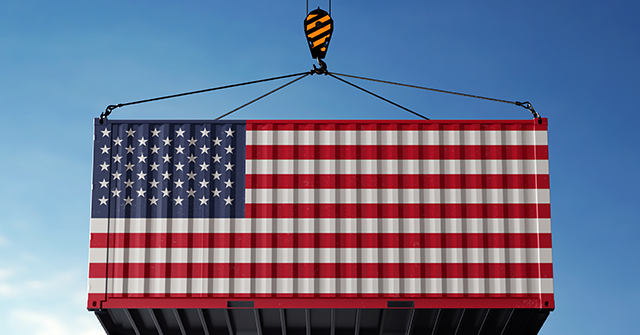Tariffs Still Are Not Producing Inflation
The June Producer Price Index (PPI) delivered another blow to the inflation hawks who insist tariffs are driving up prices.
Final demand prices rose a modest 0.2 percent on the month, and core goods prices ticked up just 0.3 percent—driven by specific categories like communication equipment and manufacturing capital goods, not broad-based inflation. More importantly, the data offer no support for the idea that tariffs are triggering a cascade of price increases across the domestic economy.
Tariff critics often dismiss PPI data by pointing out that it excludes imports. That’s true in the narrowest sense—PPI tracks the prices received by U.S. producers for goods and services made in America. But what this argument misses is that many economists didn’t just warn about direct pass-through of tariff costs on imports. They predicted that tariffs would affect the prices of domestically produced goods as well.
The theory was simple: if imported components became more expensive, manufacturers would shift to domestic inputs, bidding up those prices. Domestic firms would gain pricing power as foreign competition weakened. Rising costs would ripple through supply chains. Wall Street analysts warned that reshoring supply chains would raise domestic production costs, leading to broad inflation. They claimed that businesses would “take advantage” of tariffs to push up prices of goods that weren’t tariffed at all.
None of that has materialized in the PPI.
No Sign of Tariff Inflation Further Up the Supply Chain
If those predictions were correct, we’d expect domestic input prices—especially in tariff-sensitive sectors—to rise. Instead, steel mill products fell 0.5 percent, and foundry and forge shop products dropped 0.9 percent in June. These are precisely the categories that were supposed to rise due to indirect tariff effects. Meanwhile, intermediate demand for processed goods was flat, and trade services for intermediate demand fell 0.3 percent, suggesting that even where tariff-related costs may exist, they’re being absorbed upstream rather than passed on to downstream producers or consumers.
Of course, it is always possible to cherry-pick your way through price indexes to produce whatever result you want. Analysts at UBS, for example, pointed out that prices of core goods in the consumer price index excluding autos rose at their fastest monthly pace in three years, according to the Wall Street Journal—which only proves that you can show a lot of inflation if you exclude all the things that went down in price. We can do this the other way. If you exclude household furnishings, core goods prices went up by just 0.14 percent. If you also exclude appliances and computers, core goods prices were flat.
Nevertheless, some critics continue to point to isolated price increases as evidence of inflation. But as the Council of Economic Advisers has rightly pointed out, many are “confusing relative price changes with inflation.” There will always be some of the former. But the broader trend remains tame—and if anything, more favorable than in peer economies.
Indeed, core goods inflation has been higher in Mexico, Canada, and the UK—despite their very different trade policies. This suggests that recent price increases are part of a global phenomenon, not a tariff-driven surge specific to the United States. Since the pandemic began, cumulative core goods inflation has run higher in both Mexico and the UK than in the United States. The idea that U.S. tariffs are uniquely distorting domestic prices simply doesn’t hold up.
If tariffs were driving a generalized rise in producer prices, we’d see it here. But the PPI shows no such trend. Core goods are stable, input costs are steady or falling, and firms aren’t hiking prices through wholesale or retail markups.
That doesn’t mean tariffs are costless. After all, the U.S. government is taking in hundreds of billions of dollars of revenue in tariffs. But it does mean the alarmist forecasts about inflation were wrong. If the inflationary effect of tariffs is so small that it doesn’t even register in the prices U.S. producers are charging, then the economic risk is minimal—and the political panic was premature. It also means that the Federal Reserve’s conviction that tariffs would lead inflation higher is badly out-of-sync with reality.
Once again, real-world data have a way of disproving the experts.
Read the full article here


